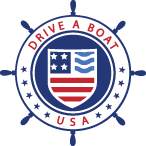Boating Fire Safety Guidelines
As a boat operator, it’s your responsibility to keep everybody safe on board, to the best of your ability, at all times. This involves knowing what to do in case of a boat fire.
Common causes of boat fires
The most common types of boat fires are:
- Engine fires, where overheating due to poor ventilation or malfunctions in the engine compartment can cause fuel to ignite. This is a risk for all motorized boats, including personal watercraft, but is especially dangerous on boats with inboard motors.
- Galley/cooking fires, where stove or grill accidents in the boat’s kitchen area can start fires that quickly spread.
- Fuel and chemical fires, where leaks, spills, or improper storage of flammable materials including alcohol on a boat provide fuel sources for fires.
- Electrical fires, both from DC electrical issues like battery or inverter problems, as well as AC electrical fires from overloaded shore power systems.
- Fires from other sources, like marina fires or nearby structures, which can then spread to the boat itself.
Marine fire prevention
Proper maintenance, safety practices, and firefighting equipment are key to preventing and containing boat fires. There are a few things you can do to prevent marine fires and be prepared in case you have to deal with one:
- Be careful when fueling your boat, so as not to spill fuel in or near your boat. Gasoline and gasoline fumes are a common cause of boat fires and explosions.
- Do regular boat maintenance to confirm that the electrical equipment on your boat is functioning properly and in good condition.
- List all required fire safety equipment on a safety equipment checklist and make sure you have it onboard at all times.
- Regularly verify that all fire safety-related equipment, including boat fire extinguishers, pyrotechnic VSDs, and backfire flame arrestors, is in good working order. Replace any old or worn gear.
- Store any flammable fluids in appropriate containers, away from heat sources.
- Install and maintain a quality boat ventilation system. Boat fuel like gasoline and propane release fumes that are heavier than air, which means they tend to collect in the hull or bilge. In addition to posing an environmental hazard, these fumes are flammable. You have to keep the lower areas of your boat clean of trash, debris and fumes to reduce the risk of a boat fire
Fire triangle
In order for a fire to ignite and continue to burn, it needs:
- Heat (such as a spark, flame, or heat from the sun)
- Fuel (such as gasoline, wood, paper, or fumes)
- Oxygen (the air you breathe)
These three elements are referred to as the ‘Fire Triangle’. If you remove one element of the triangle, the fire will be extinguished.
Marine fire response: what should you do immediately if a boat catches fire
If a fire starts on your boat, take action fast:
- Stop the engine.
- Adjust the angle of your boat so the wind blows the fire away from the vessel.
- If the source of the fire is your boat’s fuel, shut off the gas to the engine or disconnect the gas tank (if possible).
- Use your boat fire extinguisher to put out the flames.
Remember, United States law specifies that all boaters must be wearing a correctly-sized, approved life jacket at all times when out on a boat. Don’t wait for an emergency to reach for your PFD.
Using a boat fire extinguisher
Before you use a fire extinguisher, assess the situation by asking the following questions:
- Is the fire small enough to be contained using a fire extinguisher?
- Is the fire contained or is it spreading out of control?
- Do you know exactly what type of substances are fueling the fire?
- Do you have a clear escape route if the fire worsens?
You should get familiar with how to use your boat fire extinguisher before going out on the water, and make sure it is in good condition by verifying that the handle pin is in place and the charge indicator shows the right level. This way, if there is a fire, you will be prepared and can act quickly.
Steps to using a boat fire extinguisher
Use the P.A.S.S. method to put out a boat fire with a fire extinguisher:
- Pull the pin
- Aim the nozzle at the base of the fire
- Squeeze the two leavers together or press the handle
- Sweep back and forth to spread the contents at the base of the fire
Continue until the fire is completely out.
Remember:
- Stay low to avoid inhaling toxic fumes
- Always use the right size and class of boat fire extinguisher
Where to go in case of a boat fire
There is only one place to go if a boat fire gets out of control: into the water. This may seem like an ‘easy’ solution, but jumping or falling overboard involves other dangers and risks, such as those associated with cold water immersion.
There is also a risk of drowning, especially for young children and poor swimmers, even when wearing a PFD. Signalling for help may be impossible without access to your onboard Marine Distress Signals.
Note: If you see a fire on another boat, you can use your own Marine Distress Signals to help them get the assistance they need.
Get your state-approved boating license from Drive A Boat USA
Ready to learn more about boating safety in the US? When you study to get your state-approved boating license, you will find out what to do in all types of boating emergencies. Discover how to boat in rough water, what to do if your boat capsizes or someone falls overboard, and how to render assistance to other boaters in distress.
Boaters in New York, California and Florida can earn their license online now from Drive A Boat USA!


